Thanks to Cripple Creek Backcountry for sponsoring this post. They’ve got skis of all shapes and sizes to fulfill all your ski touring dreams.
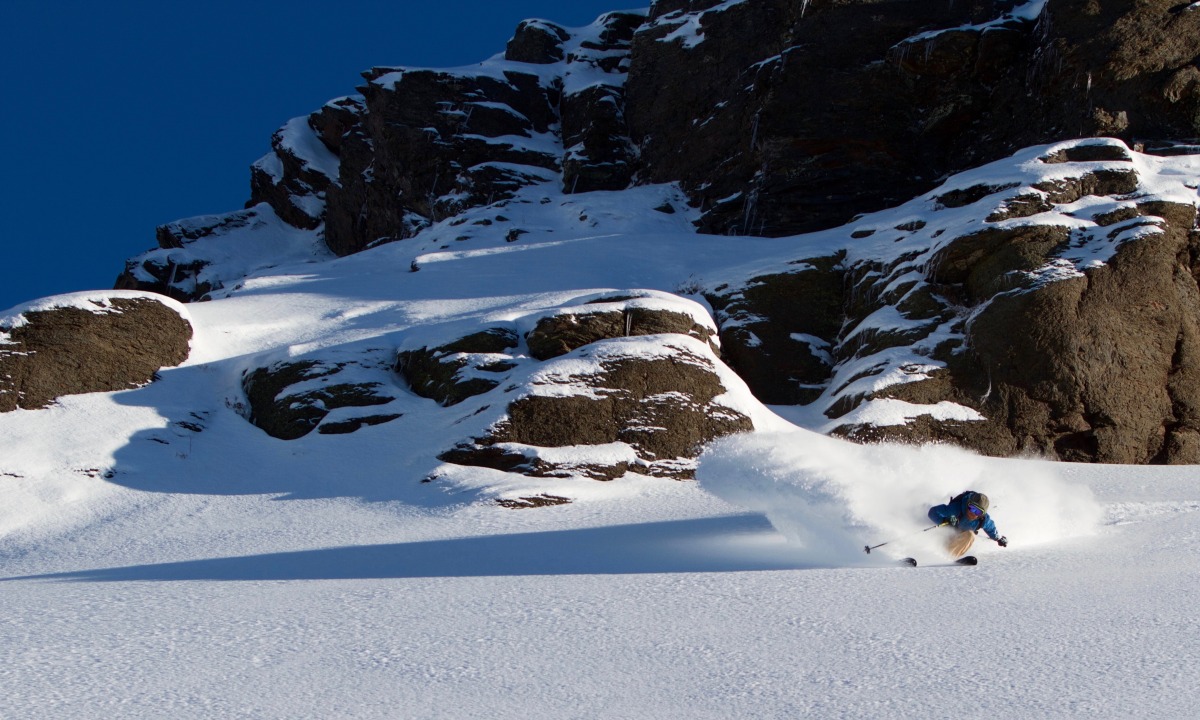
Full rockered 122mm waisted backcountry skis (Volkl BMT 122) may be going out of style, but sure were fun in deep and surfy Andes powder. Caveat is that a chair lift helped haul those behemoths to the start of this tour in Nevados de Chillan. Photo @ajmirabito
Shrinking waist sizes, mellowed rockers, focus on versatility
Unlike the majority of political climates in the world, it appears that we are finding middle ground and coming to the center on many ski shaping theories. Historically, 3-pin and older telemark bindings and boots limited the backcountry ski shape and size. Locked heel AT skiing, particularly with the advent of the tech binding and lightweight yet powerful AT boots, allowed skiers to push around big rockered planks and open up the throttle and turn shape. Did we go too far with it? Current releases would say so. Here’s a quick look at the current trends in touring ski shapes.
Waist sizes
Many brands seem to be tightening the belt a shade on the wide end of their touring lineups to the 105mm-110mm range. Fine by us. Anything above that has a host of tangential issues — sheer mass, skin weight, skin friction, etc. Don’t get me wrong, I’m a fan of big skis. I even experimented with a tech binding on an original K2 Pontoon (130mm underfoot) last season for lift assisted tours. For big touring days and maximum powder harvesting though, that 110mm top end is more than enough for my slashing needs. We don’t see a plethora of narrower (sub 90mm) planks hitting the market either. More of a depolarizing towards a median waist somewhere just under 100mm. The most popular slot in most manufacturers quivers seem to be that do it all 97-ish ski with mellow tip rocker and some early rise in the tail.
Some manufacturers are ditching the fat end of their lineup. The fattest ski of the Black Crows’ Freebird touring line, the 115mm waisted Anima Freebird, was replaced by the Ferox at 110mm. Perhaps others will soon be following suit.
Rocker vs. camber
The Anima to Ferox switch also exhibits the trend in rocker reduction. The Ferox is actually one of the more traditionally shaped fat skis we’ve seen released in some time.
Faction experimented with the uniquely rockered Prime series for a couple seasons, and are moving away from that this season. Faction Primes had more tail rocker than tip, making for a supremely pivotable ski. Lack of available tail power, along with a high price tag, probably did it in, though I will say I enjoyed the ease with which they skied.
DPS, venerable purveyors of rocker, released reduced rocker siblings for the Wailer line or even replacements (the Wailer 99 became the 100) with their C2 shaping. The goal here is more contact length (13% more in the new 110 compared to its sister, the 112 RP2).
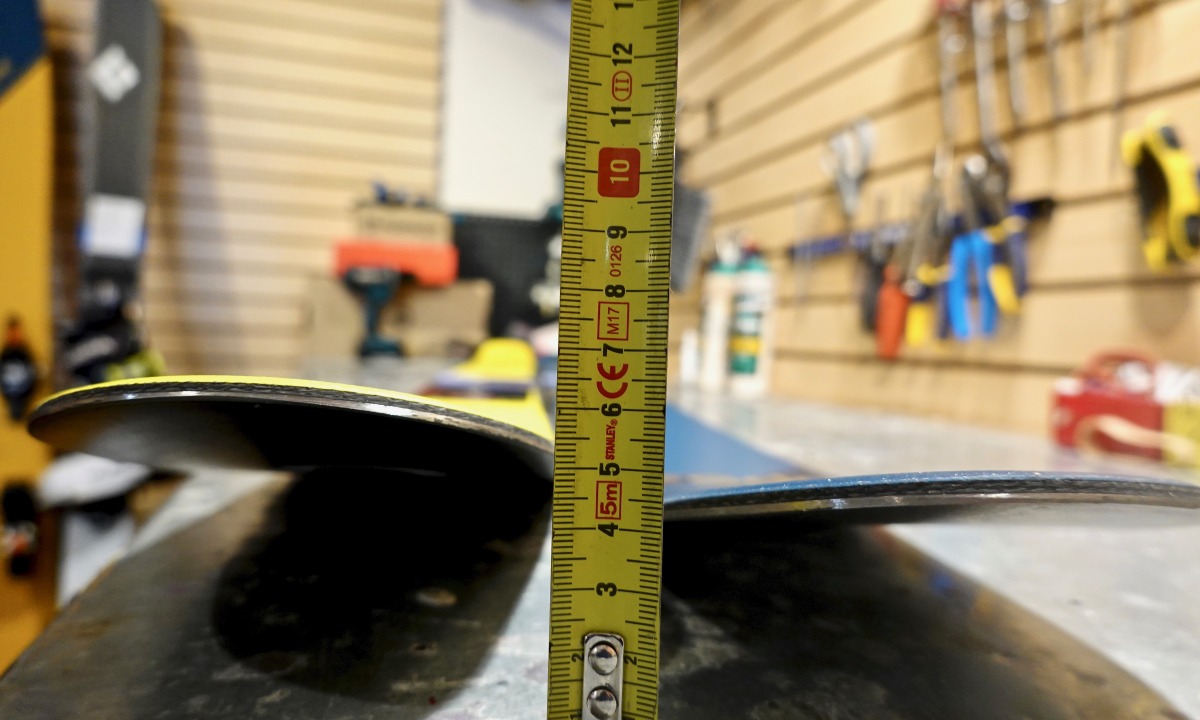
The new C2 chassis Wailer 110 (right) with over a centimeter less tip rocker, as compared to the Wailer 112 Alchemist (left).
Rocker, albeit mellowed, is here to stay in the backcountry ski world, with fully rockered options still being released. Pivot ease in variable conditions and lowered input requirements from the boot make rocker great for wilderness skiing in softer-than-alpine boots. I have put a lot of time on the mellow yet fully rockered Dynafit Beast 108 over the past couple of winters. It is such a fun ski, though I will say I have to re-learn a bit of ski technique when the cambered skis come out for mountaineering season.
Taper
The difference between the widest part of the tip and tail, or taper, is an interesting ski stat rarely discussed. The uber popular Navis Freebird, as well as the Camox, are some of the most tapered touring skis, having a 20mm difference from tip to tail, versus the 10-15mm taper typical of the majority of skis out there. Is this taper a factor in the green machine’s popularity? I would say so, mainly due to versatility.
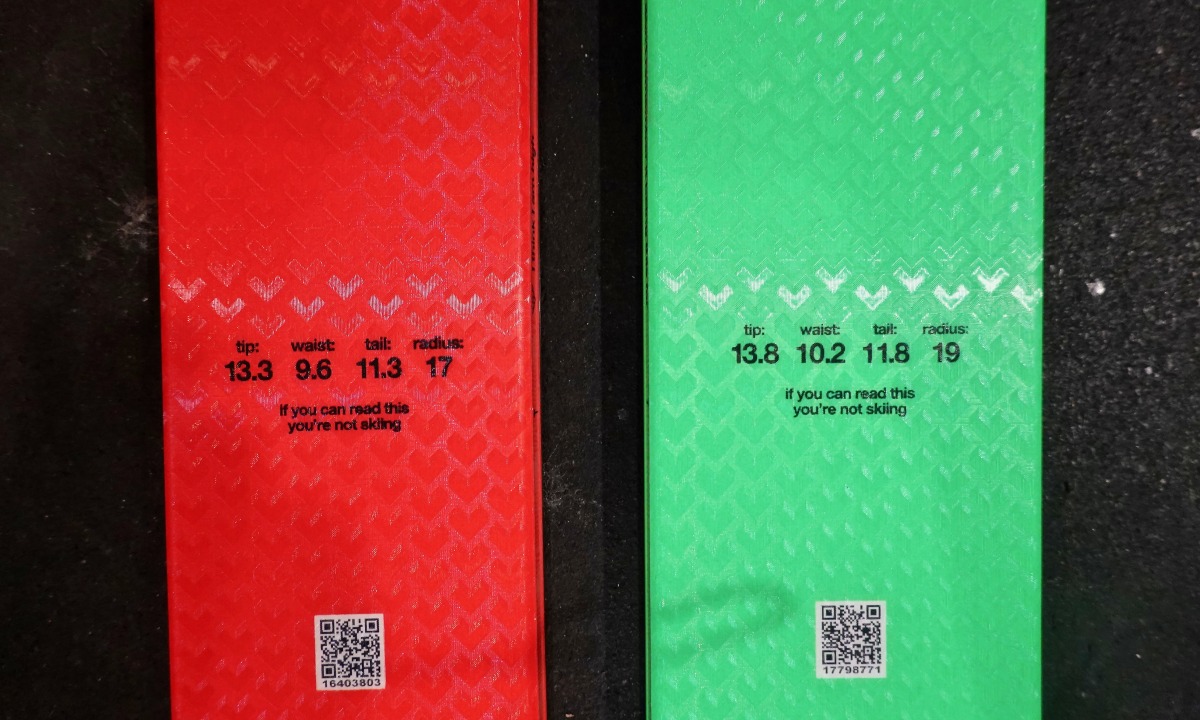
20mm of ‘taper’ in combination with a very normal rocker profile makes for a great ski. If you are reading this blog, please finish then go skiing.
Full sidewall, less carbon than most, and minimal tail rocker give the Navis Freebird great firm snow performance. Soft snow performance is retained by reducing the surface area of that otherwise traditional tail, allowing the tail to sink a bit more in relation to tip between turns (planing) and for getting the tail around mid turn (pivoting). Consider the aforementioned Pontoon, the most goofy and powder specific shape ever. It goes 160-130-120 tip to tail for a whopping 40mm of taper.
We will see if other brands adopt this shaping strategy– combining hardsnow performance with more taper.
Tip and tail profile
Ski shapers have been bringing the widest part of the tip and tail away from the ends of the ski for awhile now. In theory this makes for smoother turn initiation and exit, with a slight decrease in power. I think we’ve reached the max of that. Too far back and you lose much of the effective length that you are dragging around.
The DPS Wailer series has long been the poster child for this “elf-shoe” or 5 dimension shaping. The aforementioned C2 shape brings the widest part of the tip and tail back out towards the ends in addition to the reduced rocker.
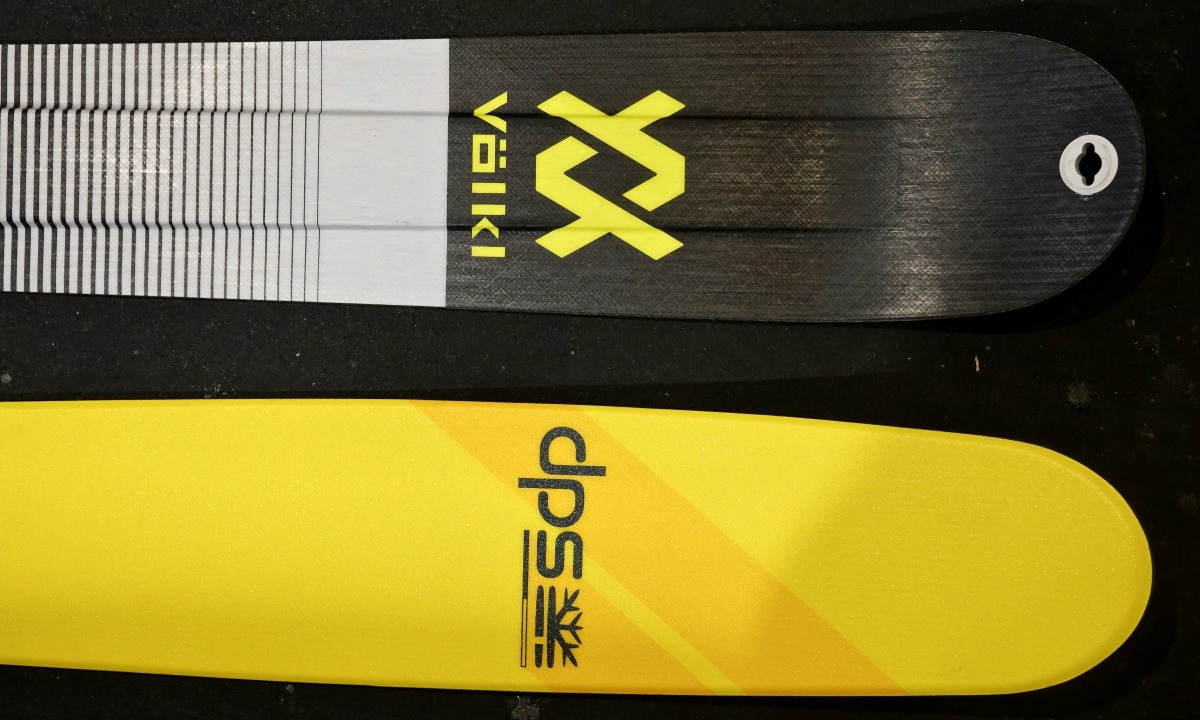
Fairly different tip profiles between otherwise similarly sized skis- Volkl Katana V-Werks and DPS Wailer 112 RP2.
Turn radius
The turn radius spectrum is huge, and not trending in any particular way, it seems. My quiver is also all over the place ranging from 17m to 26m, though a 18-20m available arc seems to be the go to for those backcountry GS turns.
In general, the fatter and more rockered ski, the longer the radius. The purpose-built steep skiing Black Crows Solis is an exception. These 100mm waisted boards rock a 25m turn radius in order to prevent that jerky feeling when only the tip and tail are hooking up on a vertical wall. There’s not a lot of terrain in our neck of the woods for testing, our few steep drops that actually hold snow are too far out for a 1950 gram ski. I would love to spend some time in Cham on them though.
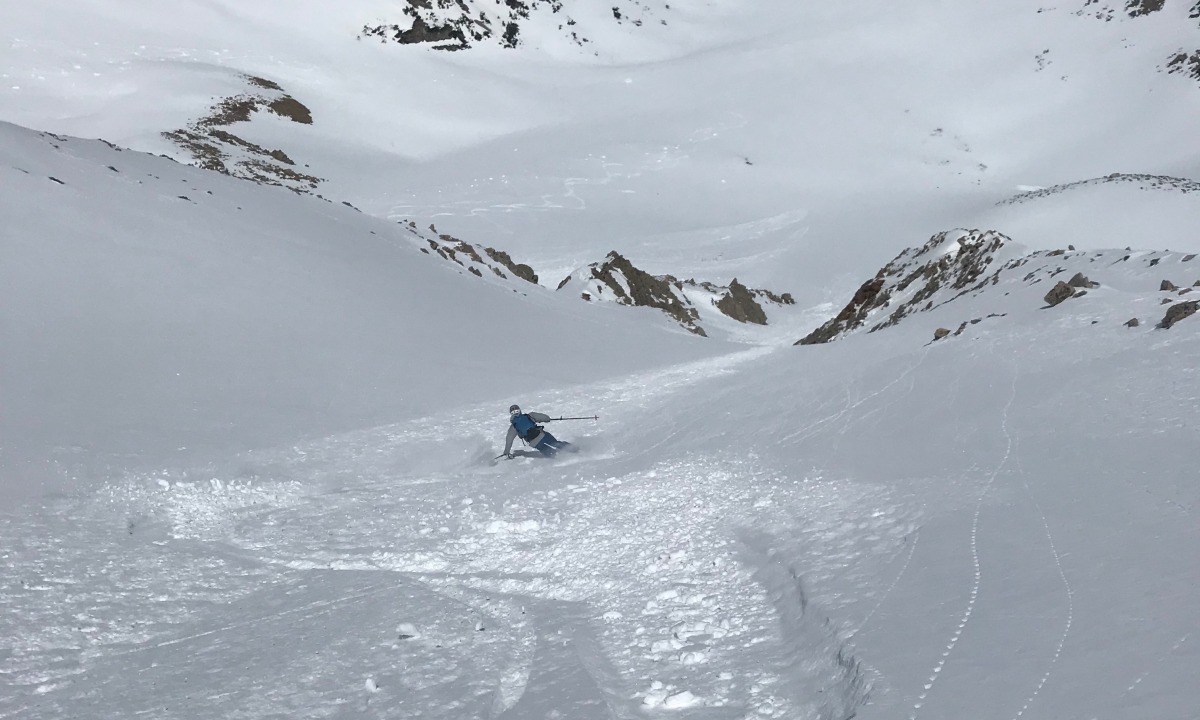
About as steep as it gets in good old CO. Still welcome terrain for GS turns on the medium sized 18m turn radius on my Tour1 Wailer 106s.
It is a great time to be a backcountry skier. There are so many manufacturers big and small, willing to play with shaping. Whether you methodically milk every hard earned turn out of a pitch or like to alter turn shapes and speeds, there is a ski shape out there for you. We are excited to see what brands have in store for the future, and will be reporting on next season’s skis soon.
On March 22nd 2021, Gary Smith tragically died in an avalanche outside of Beaver Creek Resort in Colorado. Since 2018, Gary has been a frequent and insightful contributor to WildSnow. From Christmas Eve spent at the Wildsnow Field HQ cabin, to testing gear and sharing his love for steep skiing around the world, he was a pillar of the ski touring community and will be greatly missed.
